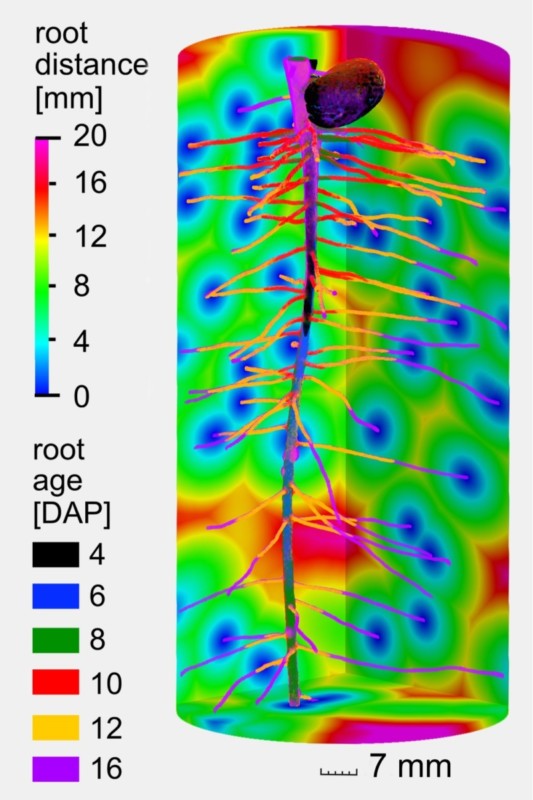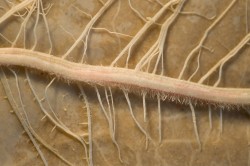Applied Mathematics tackles “real” roots

The German Research Foundation DFG supports a Priority Programme for rhizosphere research with €6 million. It is coordinated at the Helmholtz Centre for Environmental Research (UFZ) in Leipzig/Halle, with 18 German research institutions involved in 25 projects – from the disciplines microbiology and plant genetics to soil chemistry, soil physics and mathematical modelling .
The principal investigators of the project at FAU, Dr. Alexander Prechtel and Dr. Raphael Schulz, develop models together with project member Alice Lieu that allow to analyse the manifold couplings between biological, chemical and physical processes on scales from nanometers to centimeters. The emergence of structures will be studied with the help of interacting cellular automaton models and partial differential equation systems.
The objective of the interdisciplinary consortium is to investigate what degree of importance interactions between roots and soil have for water and matter cycles in the environment. The researchers aim to demonstrate that the rhizosphere is a self-organised system which withstands disturbances on its own.

Photo: André Künzelmann, UFZ
Links:
http://www.ufz.de/spp-rhizosphere/
https://cris.fau.de/converis/portal/project/202790695?lang=en_GB
Further Information:
Dr. Alexander Prechtel
Applied Mathematics 1
prechtel@math.fau.de

